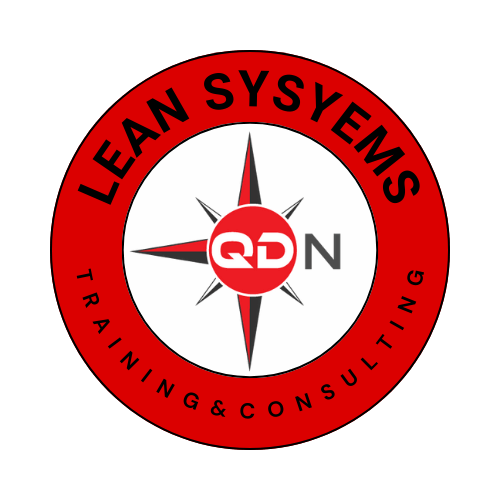
Improving Worker Safety with Standardized Work
Improving Worker Safety with Standardized Work
Worker Safety with Standardized Work - Introduction
Standardized work is a key component of lean manufacturing, which is a production system that seeks to reduce waste and increase efficiency. By standardizing the processes used in production, manufacturers can ensure that their workers are following safe practices and minimizing the risk of injury or illness. In this blog post, we will discuss how standardized work can be used to improve worker safety in the manufacturing process.
What is Standardized Work?
Standardized work is a set of procedures that are used to complete a task in the most efficient way possible. It involves breaking down tasks into smaller steps and then documenting each step so that it can be repeated consistently. This helps to ensure that all workers are following the same process and reduces the risk of errors or accidents.
Benefits of Standardized Work for Worker Safety
Standardized work has several benefits when it comes to worker safety. First, it ensures that all workers are following the same process, which reduces the risk of mistakes or accidents. Second, it allows for better training and supervision, as supervisors can easily identify any areas where workers may need additional instruction or guidance. Finally, it makes it easier to identify potential hazards and take steps to mitigate them before they become an issue.
Implementing Standardized Work
Implementing standardized work requires careful planning and consideration. The first step is to identify the tasks that need to be standardized and document each step in detail. Once this is done, it's important to train all workers on the new procedures and provide ongoing support and supervision. Finally, it's important to regularly review the procedures to ensure they are still effective and make any necessary changes if needed.
Concider these factors when developiong standardized work and control methods for worker safety:
- Establishing a safety protocol for all workers to follow, such as wearing protective gear and following proper lifting techniques.
- Providing regular safety training to ensure that all workers are aware of the risks associated with their job and how to mitigate them.
- Implementing a system of checks and balances to ensure that safety protocols are being followed, such as regular inspections and audits.
- Establishing clear communication channels between management and workers so that any safety concerns can be addressed quickly and effectively.
- Creating an emergency response plan in case of accidents or other hazardous situations.
- Ensuring that all equipment is properly maintained and inspected regularly for any potential hazards.
- Establishing a reporting system for any incidents or near-misses so that they can be investigated and addressed appropriately.
Conclusion
Standardized work is an important part of lean manufacturing and can be used to improve worker safety in the manufacturing process. By breaking down tasks into smaller steps and documenting each step, manufacturers can ensure that all workers are following safe practices and minimize the risk of injury or illness. Implementing standardized work requires careful planning and ongoing support, but its benefits make it well worth the effort.
Jeffrey K. Liker is a professor of industrial and operations engineering at the University of Michigan and a well-known author in the field of lean manufacturing and the Toyota Production System.
- Toyota Culture: The Heart and Soul of the Toyota Way (co-authored with Michael Hoseus)
- The Toyota Way Fieldbook: A Practical Guide for Implementing Toyota's 4Ps (co-authored with David Meier)
- Toyota Talent: Developing Your People the Toyota Way (co-authored with David Meier)
- Developing Lean Leaders at All Levels: A Practical Guide (co-authored with George Trachilis)
- The Toyota Product Development System: Integrating People, Process and Technology (co-authored with James M. Morgan)
- The Toyota Way to Continuous Improvement: Linking Strategy and Operational Excellence to Achieve Superior Performance (co-authored with James Franz)
- The Toyota Way to Service Excellence: Lean Transformation in Service Organizations (co-authored with Karyn Ross)
- The Toyota Way to Lean Leadership: Achieving and Sustaining Excellence through Leadership Development (co-authored with Gary L. Convis)
- The Toyota Way to Healthcare Excellence: Increase Efficiency and Improve Quality with Lean (co-authored with James Morgan and Joanne Lynn)
Lean Manufacturing Resources:
- Lean Thinking: Banish Waste and Create Wealth in Your Corporation by James P. Womack and Daniel T. Jones
- Learning to See: Value Stream Mapping to Create Value and Eliminate MUDA by Mike Rother and John Shook
- Lean Six Sigma: Combining Six Sigma Quality with Lean Production Speed by Michael L. George
- The Goal: A Process of Ongoing Improvement by Eliyahu M. Goldratt
- Gemba Kaizen: A Commonsense Approach to a Continuous Improvement Strategy by Masaaki Imai
- Toyota Production System: An Integrated Approach to Just-In-Time by Yasuhiro Monden
- Kaizen: The Key to Japan's Competitive Success by Masaaki Imai
- The Machine That Changed the World: The Story of Lean Production by James P. Womack, Daniel T. Jones, and Daniel Roos
- Lean Enterprise: How High-Performance Organizations Innovate at Scale by Jez Humble, Joanne Molesky, and Barry O'Reilly